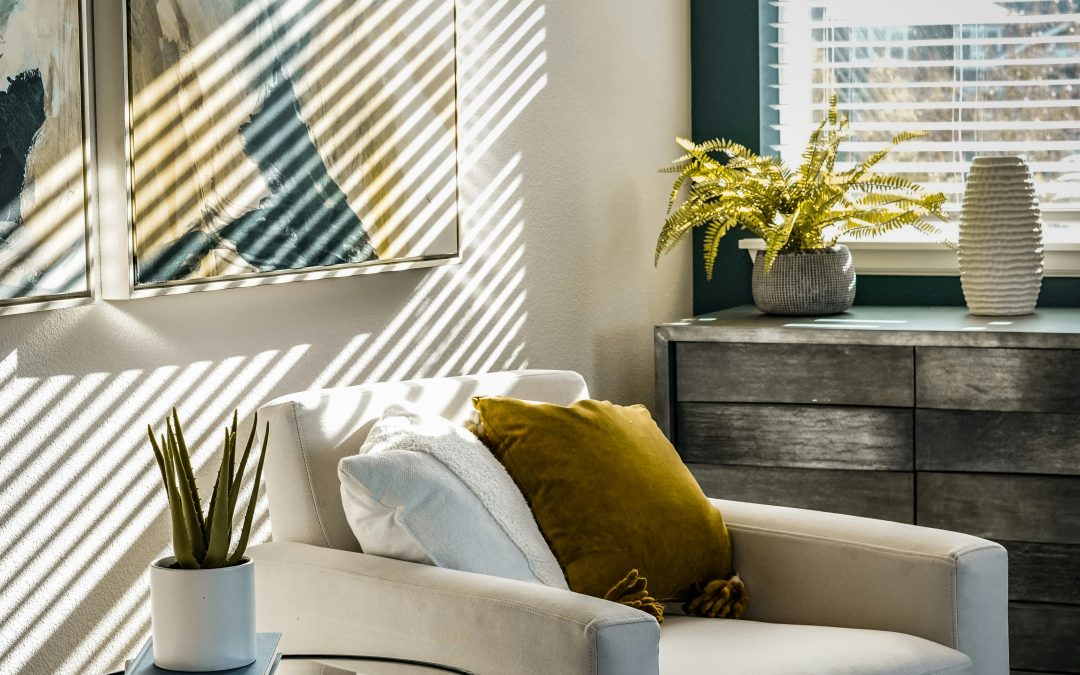Are you tired of the same old, boring home decor? It’s time to look for sustainable interior design and make your home lively again. This approach goes beyond aesthetics and focuses on creating a living space that is not only visually appealing but also environmentally responsible. You can transform your home into a comfortable, eco-friendly haven by understanding the principles of sustainable design. In this blog, we will explore the different aspects of sustainable interior design and provide you with practical, real-world ideas to make your home more sustainable.
Material Selection
When it comes to sustainable interior design, the materials you select play a huge role. You can’t build a sustainable home without low quality materials. When you do material selection, you want to prioritize renewable, recyclable, and non toxic options that reduce your environmental impact. Imagine furnishing your living room with a stunning bamboo coffee table or adorning your bedroom with organic cotton bedding. These choices not only look beautiful but also support a more sustainable future.
Repurposing and upcycling existing furniture can also be a fantastic way to add sustainability into your home decor. What you want to do is explore the wide range of eco-friendly materials available and make informed decisions that align with your personal style and environmental values.
Energy Efficiency
Sustainability isn’t just about the materials you use; it’s also about how you power your home. Most homes in the US are now shifting to LED bulbs which consume less energy. You can significantly reduce your carbon footprint and lower your utility bills by focusing on energy efficiency. Start by swapping out traditional light bulbs and replace them with energy-efficient LED alternatives. When you use LED bulbs, not only are you helping the environment around you, but also saving your costs.
You also want to take advantage of natural lighting whenever possible. You can do this by strategically placing windows and skylights to minimize the need for artificial illumination. When it comes to appliances and HVAC systems, look for Energy Star-certified models that deliver exceptional performance while consuming less energy. Ensuring proper insulation and weather-proofing is also crucial for maintaining a comfortable, energy-efficient living space.
Water Conservation
Water is a precious resource, and sustainable interior design recognizes the importance of conserving it. One way to do this is by installing low-flow fixtures, such as showerheads and faucets, which can dramatically reduce your water consumption. When we take a bath or wash our hands, we waste at least half of the water, but with shower heads, you can reduce your water consumption and support the environment.
You may also want to explore water-efficient appliances, like dishwashers and washing machines, that use less water during their operation. For those interested in taking their water conservation efforts to the next level, consider incorporating a greywater system that recycles water from sinks, showers, and washing machines for tasks like irrigation or toilet flushing.
Indoor Air Quality
Sustainable interior design is not just about the physical aspects of your home; it also includes the quality of the air you breathe. You want to be mindful of the paints, stains and finishes you use, making sure they are low in volatile organic compounds (VOCs) that can negatively impact indoor air quality.
If you are looking for options to improve Indoor Air Quality, we recommend you place houseplants throughout your home. It is another fantastic way to naturally filter and purify the air, which will ultimately create a healthier living environment.
Minimalism and Multifunctionality
Sustainable interior design often goes hand-in-hand with the principles of minimalism and multifunctionality. By decluttering and optimizing the use of space, you can reduce the overall environmental impact of your home. Multifunctional furniture, such as storage ottomans and convertible sofas, can serve multiple purposes while occupying less square footage. This approach not only improves the aesthetics of your living space but also aligns with the sustainable mindset of minimizing waste and maximizing efficiency.
Conclusion
Sustainable interior design is more than just a trend; it’s a holistic approach to creating a living space that is in harmony with the environment. By integrating eco-friendly materials, energy-efficient systems, water conservation strategies, and air quality improvements, you can transform your home into a sanctuary that benefits both you and the planet.
Remember, every small step you take toward sustainable design can have a ripple effect, inspiring others to follow suit. So, what are you waiting for? Make yourself eco-friendly with sustainable design by contacting Eileen Gould at 818-421-7667 or visiting our website for more information.
FAQs:
Q1. What is sustainable interior design?
A: Sustainable interior design focuses on using eco-friendly materials, energy-efficient systems, and water conservation strategies to create a more environmentally responsible living space.
Q2. Why is sustainable interior design important?
A: Sustainable interior design helps reduce the environmental impact of homes, lower utility costs, and promote a healthier living environment.
Q3. What are some sustainable materials for home decor?
A: Sustainable materials for home decor include bamboo, cork, reclaimed wood, organic fabrics, and recycled or repurposed items.
Q4. How can I improve the energy efficiency of my home?
A: Improving energy efficiency involves using LED lighting, energy-efficient appliances, proper insulation, and leveraging natural lighting.
Q5. What are the benefits of a minimalist, multifunctional approach to interior design?
A: A minimalist, multifunctional approach reduces resource consumption, optimizes space, and creates a cleaner, more organized living environment.
https://unsplash.com/photos/a-living-room-filled-with-furniture-and-a-painting-on-the-wall-H8ATMkhYnIo?utm_content=creditShareLink&utm_medium=referral&utm_source=unsplash


